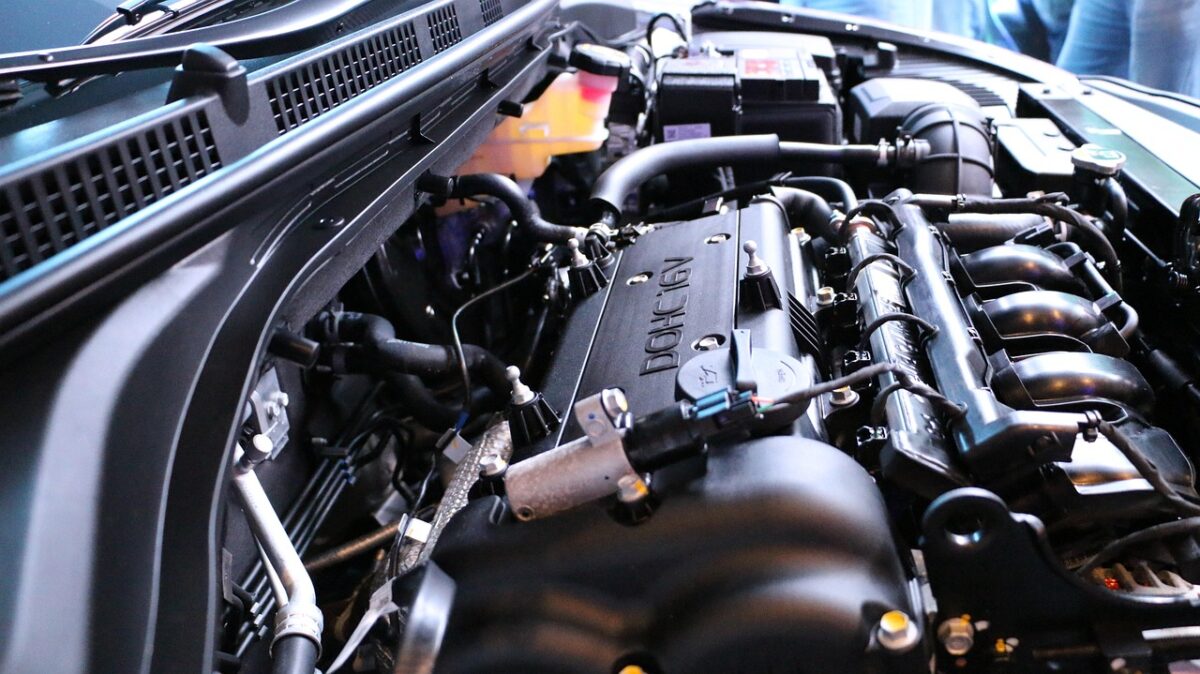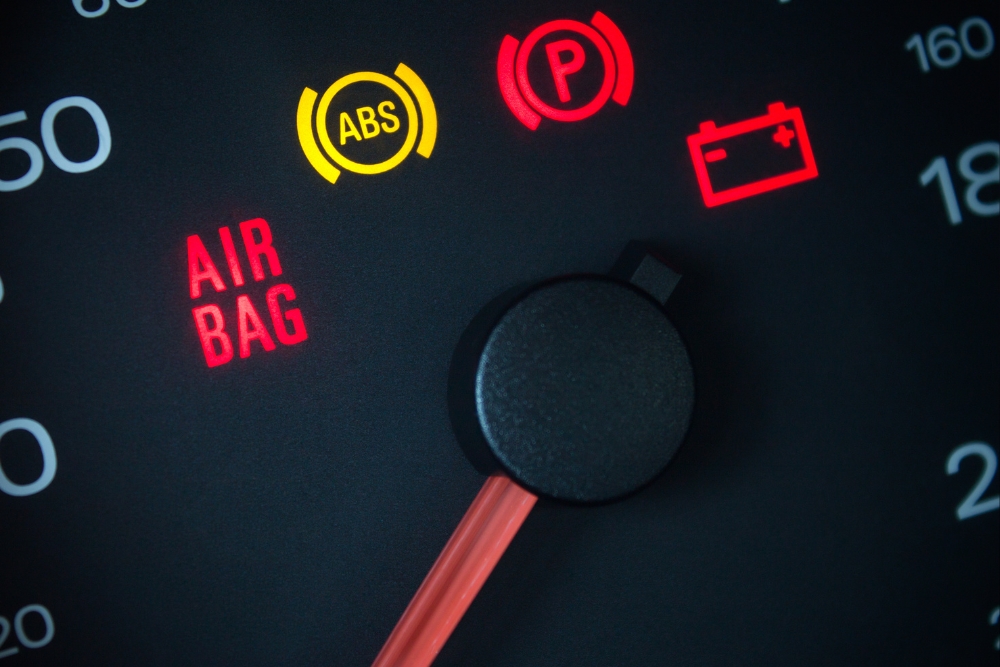Your car’s starter motor is a crucial component that gets your engine running every time you turn the key or press the start button. When this essential part begins to fail, it can leave you stranded at the most inconvenient times. Understanding the warning signs of a failing starter motor can help you address the problem before you’re left unable to start your vehicle.
Common Signs Your Starter Motor Is Failing
Clicking Sound When Starting
One of the most recognisable signs of starter motor trouble is hearing a clicking or rapid clicking noise when you attempt to start your car. This sound typically indicates that the starter solenoid is engaging but the motor itself isn’t turning the engine over. The clicking occurs because the starter motor isn’t receiving enough power to crank the engine, or its internal components are worn out. This problem often starts intermittently, where your car might start after a few attempts, but progressively gets worse over time.
The clicking sound can vary in intensity and frequency depending on the severity of the problem. Sometimes you’ll hear a single loud click, whilst other times it might be a series of rapid clicks. If you notice this happening more frequently, especially during cold mornings in Auckland when the battery is already under more strain, it’s time to have your starter motor inspected by a professional.
Grinding Noises During Starting
A grinding noise when starting your vehicle is another clear indicator of starter motor problems. This harsh, metal-on-metal sound typically means the starter drive gear is worn or not engaging properly with the flywheel. The grinding occurs when the teeth on the starter gear clash with the flywheel teeth instead of meshing smoothly. This problem can cause significant damage to both the starter motor and the flywheel if left unaddressed.
In some cases, the grinding noise might only occur occasionally, particularly when the engine is cold or after the vehicle has been sitting for extended periods. The sound is distinctly different from the normal whirring of a healthy starter motor and should never be ignored. Continuing to drive with this issue can lead to expensive repairs beyond just the starter motor replacement.
Slow or Laboured Cranking
When your engine cranks slowly or seems to struggle before starting, this often points to a weakening starter motor. The motor might still work, but it’s not operating at full capacity due to worn brushes, failing bearings, or electrical issues within the motor itself. You’ll notice the engine turns over more slowly than usual, and it might take longer for the car to start. This sluggish cranking is particularly noticeable on cold mornings or after your vehicle has been sitting for several days.
The slow cranking might be accompanied by dimming interior lights or dashboard lights when you turn the key. This happens because the failing starter motor draws more current than normal whilst struggling to turn the engine. Over time, this excessive current draw can also damage your battery and alternator, leading to more widespread electrical problems in your vehicle.
Intermittent Starting Problems
Perhaps one of the most frustrating symptoms is when your car starts perfectly fine one moment but refuses to start the next. This intermittent starting issue often indicates that the starter motor is on its way out but hasn’t completely failed yet. The problem might be related to worn internal components that work when they’re in just the right position but fail when they’re not. Temperature changes, vibrations from driving, or simply the random nature of mechanical wear can all contribute to these unpredictable starting issues.
These intermittent problems tend to become more frequent over time. You might find that tapping the starter motor with a tool helps it engage temporarily, but this is only a short-term solution. The unpredictability of intermittent starting problems makes them particularly dangerous, as you never know when your vehicle might refuse to start, potentially leaving you stranded in an unsafe location or causing you to miss important appointments.
Smoke or Burning Smell
If you notice smoke coming from under your bonnet or detect a burning smell after attempting to start your car, this is a serious warning sign that shouldn’t be ignored. The starter motor has likely overheated from drawing too much power or from repeated starting attempts. The burning smell typically comes from overheated electrical components or melting wire insulation. This situation can quickly escalate to an electrical fire if the problem isn’t addressed immediately.
The overheating often occurs when drivers continue to crank the engine for extended periods, hoping it will eventually start. However, starter motors are designed for short bursts of operation, not continuous use. When the motor overheats, internal components can warp or melt, causing permanent damage that requires complete replacement rather than repair.
What to Do When You Notice These Signs
Immediate Steps to Take
When you first notice any of these warning signs, stop trying to force the engine to start after more than a few attempts. Continuing to crank a failing starter motor can cause additional damage to your electrical system and potentially drain your battery completely. Give the starter motor a few minutes to cool down between attempts if you must try to start the vehicle. This cooling period can sometimes allow you to get one more start out of a failing motor, giving you the opportunity to drive to a safe location or repair shop.
Check your battery connections first, as loose or corroded terminals can sometimes mimic starter motor problems. Clean any visible corrosion from the battery terminals using a wire brush and ensure all connections are tight. If the problems persist after checking the battery, it’s likely the starter motor itself that needs attention. Keep jumper cables in your vehicle as a temporary solution, though jump-starting won’t help if the starter motor has completely failed.
Professional Diagnosis and Repair
Getting a professional diagnosis is crucial when dealing with starter motor issues. An experienced auto electrician can perform comprehensive tests to determine whether the problem lies with the starter motor itself, the solenoid, the ignition switch, or other related components. They’ll use specialised diagnostic equipment to measure voltage drops, current draw, and circuit continuity throughout the starting system. This thorough approach ensures that you’re not replacing parts unnecessarily.
The diagnostic process typically involves testing the battery’s condition and charge level, checking all electrical connections, and performing a starter motor current draw test. The technician will also inspect the flywheel teeth for damage, as worn teeth can cause symptoms similar to starter motor failure. In Auckland’s humid climate, corrosion on electrical connections is common and can contribute to starting problems, so a thorough inspection of all wiring and connections is essential.
Professional starter motor repair or replacement requires expertise and the right tools. The location of the starter motor can vary significantly between vehicle makes and models, with some requiring extensive disassembly to access. An experienced auto electrician will ensure the replacement starter motor is correctly aligned with the flywheel and that all electrical connections are secure and properly insulated. They’ll also test the entire starting system after installation to confirm everything is working correctly.
Preventing Starter Motor Failure
Regular Maintenance Tips
Maintaining your vehicle’s electrical system is key to extending your starter motor’s lifespan. Have your battery tested regularly, especially if it’s more than three years old, as a weak battery forces the starter motor to work harder. Keep battery terminals clean and free from corrosion by applying a thin layer of petroleum jelly or terminal protector spray. Check that the battery is securely mounted, as excessive vibration can damage both the battery and starter motor connections.
Avoid holding the key in the start position for more than 10 seconds at a time. If your engine doesn’t start within this timeframe, wait at least 30 seconds before trying again to allow the starter motor to cool. This practice prevents overheating and reduces wear on the motor’s internal components. Also, ensure you fully release the key or start button once the engine fires up, as keeping the starter engaged whilst the engine is running will quickly destroy it.
Regular servicing of your vehicle helps identify potential problems before they lead to starter motor failure. During routine maintenance, ask your mechanic to check the condition of the starter motor and its connections. They can spot early signs of wear, such as loose mounting bolts or deteriorating wiring, that you might not notice during normal driving. Addressing these minor issues early can prevent complete starter motor failure down the track.
Understanding Your Vehicle’s Starting System
Understanding how your vehicle’s starting system works can help you identify problems early and communicate effectively with your mechanic. The starting system consists of the battery, ignition switch, starter relay or solenoid, starter motor, and the engine’s flywheel. When you turn the key, electrical current flows from the battery through the ignition switch to the starter solenoid, which then engages the starter motor. The motor’s drive gear extends to mesh with the flywheel, turning the engine until it starts running on its own.
Modern vehicles often have additional components like immobilisers and push-button start systems that add complexity to the starting system. These systems can sometimes cause symptoms similar to starter motor failure, which is why professional diagnosis is important. Understanding these basics helps you provide accurate information to your auto electrician, potentially saving time and money on repairs.
The Cost of Ignoring Starter Motor Problems
Ignoring starter motor warning signs can lead to more expensive repairs and inconvenient breakdowns. A failing starter motor that’s forced to work can damage the flywheel’s ring gear, turning a simple starter replacement into a much more costly repair requiring transmission removal. The excessive current draw from a struggling starter motor can also prematurely wear out your battery and alternator, adding to your repair costs. In some cases, the starter motor can become stuck in the engaged position, causing severe damage to both the starter and the engine.
Beyond the financial costs, a failed starter motor can leave you stranded in potentially dangerous situations. Imagine your car refusing to start in a dark car park late at night, during severe weather, or when you’re running late for an important meeting. The stress and inconvenience of these situations far outweigh the cost of addressing starter motor problems when you first notice the warning signs. Having your vehicle towed to a repair shop also adds unnecessary expense that could be avoided with timely maintenance.
The safety implications extend beyond just being stranded. A vehicle that won’t start reliably can create hazardous situations if it stalls in traffic or at intersections. This is particularly concerning in Auckland’s busy traffic conditions where a stalled vehicle can quickly cause congestion and increase accident risk. Taking action at the first sign of starter motor problems helps ensure your vehicle remains safe and reliable for you and other road users.
Need Help With Your Starter Motor?
Recognising the signs of a failing starter motor early can save you from unexpected breakdowns and costly repairs. From clicking sounds and grinding noises to slow cranking and intermittent starting problems, these warning signs shouldn’t be ignored.
As expert auto electricians in Auckland, Eurosparx can diagnose and repair all types of starter motor problems quickly and efficiently. Contact our experienced team today by calling 09 218 7789 to book an inspection and get your vehicle starting reliably again.





